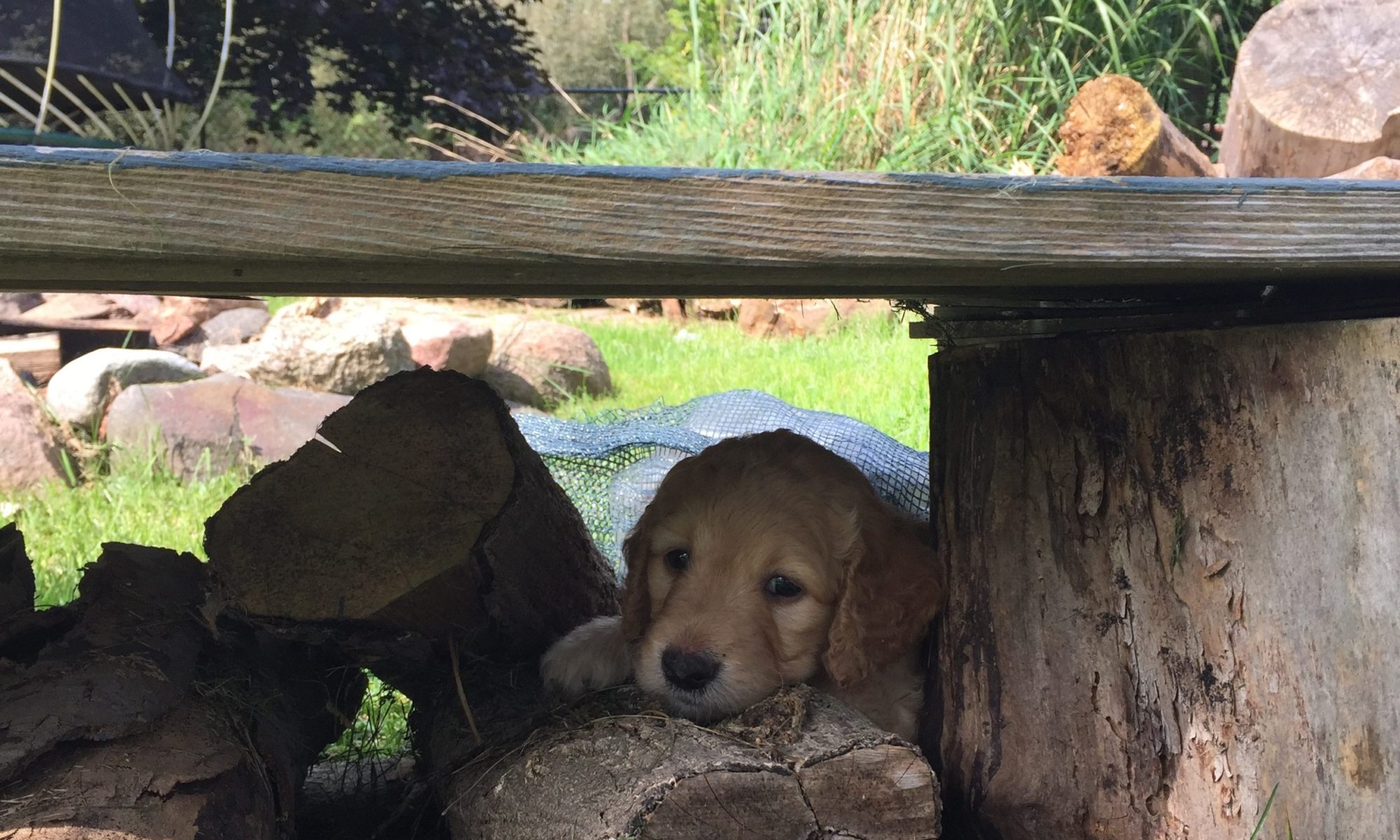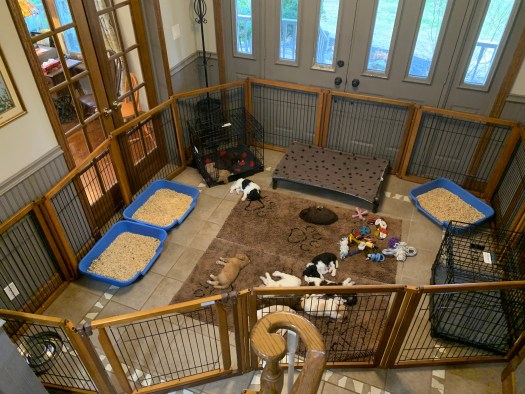Ruska’s Puppies

Ruska’s puppies are seven weeks old today. The saying “An active puppy is a healthy puppy” makes these puppies very healthy. They are all over the yard exploring every corner. It is a two person job to keep track of them. I put them into the puppy enclosure (as you can see in the picture above) to give them a safe place to settle down and rest. They were not too please to be confined in the outdoors but, it is a good learning experience to teach them to calm down. Puppies have now made the transition to eating dry kibble puppy food today.





Some of my grandchildren came by for a visit and photo’s with our puppies
LOOKING AHEAD TO WEEK EIGHT
- Puppies will continue exploring and playing together outdoor as weather permits
- Puppies will continue learning from their mama Ruska, and the rest of our dogs Ellie, Brinkley, and Willow
- Puppies will continue learning as the play with their litter-mates
- We will continue to encourage puppies to use potty area
- Puppies will visit the vet for their check-ups, immunizations and micro chips
- Puppies will continue to get lots of cuddle time
- Puppies will start to leave for their forever families at eight weeks.

Ellie’s Puppies
One of my favourite time in puppy breeding, is when I introduce our puppies to their forever families. We are looking forward to meeting them at Ellie’s puppy selection/visitation day this weekend. Until you meet your puppy in person, enjoy watching these adorable puppies play with Willow in the video below.






